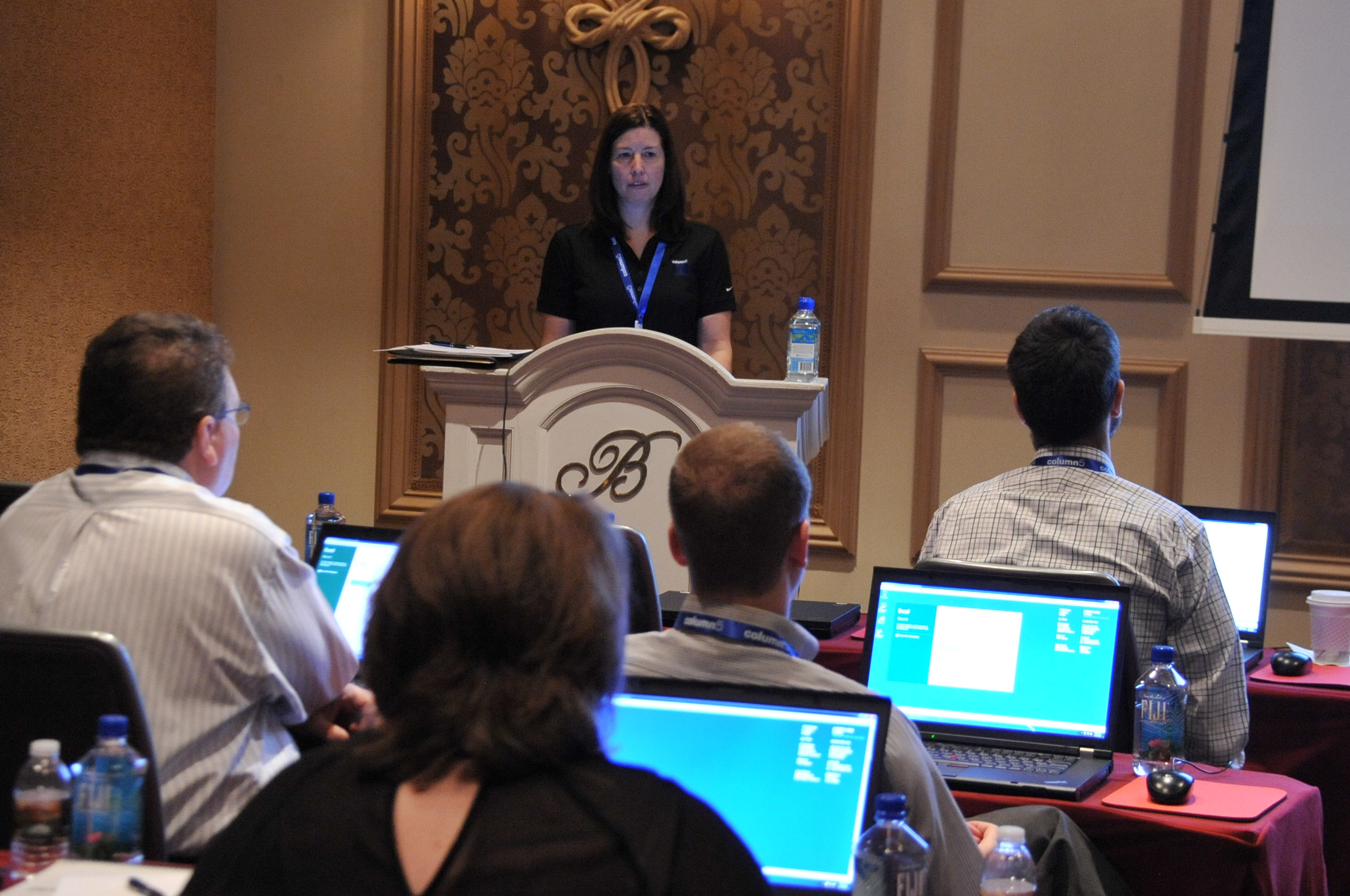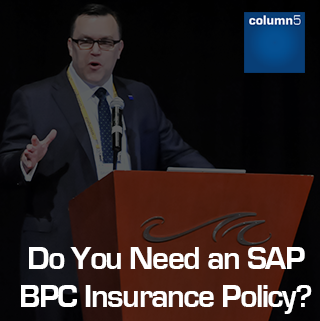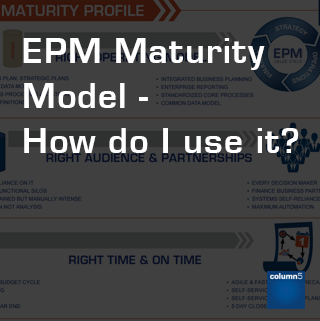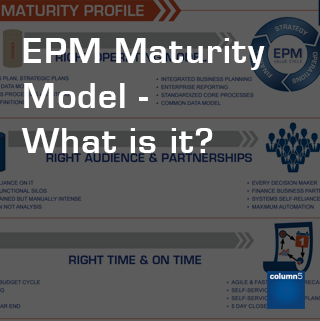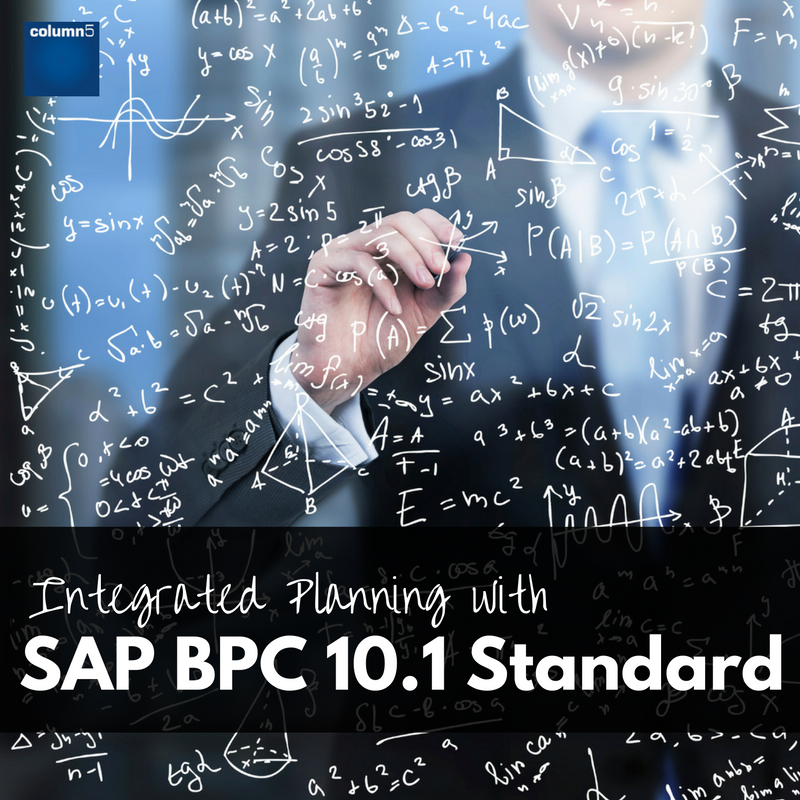As with most specialized software programs, it is usually not suggested to implement SAP BPC without the assistance of a consulting partner. Many projects require expertise that most EPM administrators do not have, and so it is recommended to find a partner that can ensure success. Choosing this partner is an important decision. Here are a few of the top things a company should look at when deciding on an appropriate organization.

SAP Analytics
Thought Leadership
The Top 5 Things to Consider When Selecting a Consulting Partner
Topics: Best Practices, Thought Leadership, Enterprise Performance Management (EPM), Project Management, Training, Implementation, BPC (Business Planning & Consolidation)
EPM Project Management Success: The 3 Lines of Defense to Reducing Risk on an SAP BPC EPM Project
A risk is the possibility of an event or a condition that could negatively impact a project. There are many events or conditions in any EPM BPC implementation that can derail the project, because BPC is a complex tool that touches many areas of your organization. This article is intended to help mitigate risk.
Topics: Process Improvement, Thought Leadership, Enterprise Performance Management (EPM), Project Management, BPC (Business Planning & Consolidation)
COVID-19: How To Update your EPM Solution & Avoid Exposure by Long Planning Turnaround Times
The COVID-19 pandemic hit just like the children’s game of musical chairs. As the music of our economy stopped, if you were not near a safe place to sit, you were caught out in the open…finding yourself at risk. Similarly, your EPM solution was likely being enhanced, and upgraded on a certain path before the virus came into being. Any EPM strategy not ready for intensified operations learned the hidden weaknesses of their solution.
To make you feel better, almost no EPM solution was ready for this.
Whatever the state was of your EPM solution, that is the tool you had to wield as you navigated your organization through the impacts of the virus. As we said in part one of this blog series, the jarring impact to the market doesn’t specifically need to be the virus, it could be anything. Just some unpredictable market influence that won’t wait for long running processes.
Topics: Thought Leadership, Enterprise Performance Management (EPM), Performance, Performance Tuning
COVID-19: A time for Leadership - Leveraging Enterprise Performance Management in Times of Crisis
"The Chinese use two brush strokes to write the word 'crisis. ' One brush stroke stands for danger; the other for opportunity. In a crisis, be aware of the danger--but recognize the opportunity."
John F. Kennedy, US President
It's the sort of blockbuster movie plot you'd expect to see while sitting in the dark confines of a movie theater, booming audio and a gasping crowd. A thrilling plot has your eyes riveted to the screen, where the dramatic tension is only broken when you run out of popcorn or the movie ends. In that scenario, you can return to your "real life" in a little over an hour, with no discernible life altering impact. It is now clear this COVID-19 provocateur is no movie; this virus will not go away so quietly without leaving an indelible impact on the world. It most certainly will impact how you and the leadership team rely on your EPM software and Enterprise Performance Management in general.
For this article, we'll define EPM software as Gartner does as dealing with “the process of monitoring performance across the enterprise with the goal of improving business performance.” Other activities we'll include under the Enterprise Performance Management umbrella are FP&A modeling, budgeting, forecasting, reporting, and consolidation. Keep reading to find out how our plot unfolds. You'll learn how to avoid high latency, Excel centric planning. You'll also learn 3 stages of recovery and the leadership principles needed to accelerate your Enterprise Performance Management and remodeling during COVID-19.
Topics: Thought Leadership, Enterprise Performance Management (EPM), Performance, User Experience
We have all overcome mistakes in life, using the rearview mirror to observe how easy it would have been to sidestep the pitfall, commenting, “If only I knew then what I know now.” This thought crosses my mind almost daily.
What do you do when you feel this way about the EPM process, BPC or your consultants? Do you ever wonder how they became experts, or how qualified they truly are? How do they define best practice? Recently, I worked with a customer who started their BPC journey with an early version of BPC for NetWeaver. They sought out highly talented consultants, assuming their talent and experience based on their reputation within the industry.
Topics: Best Practices, Thought Leadership, Enterprise Performance Management (EPM), Implementation, Services Focused, Executive
Two things are certain in life: death and taxes. An EPM user might add “struggling with EPM software” to the list of unavoidable challenges. In the case of taxes, one could (and absolutely should) hire an experienced tax services provider to craft a tax minimizing strategy. You will still pay taxes, but the difference between paying a lot, or a little, lies in the expertise of who you hire.
Topics: Thought Leadership, BPC, Executive, EPM
In the last article we looked at the definition and content of the EPM Maturity Model.
In this article we’ll look at how to gauge EPM Maturity and how to identify areas to improve. At the core of the Maturity Model is the definition of:
- Right Model
- Right Audience
- Right Time
Across these definitions we lay a scale that moves from low levels of maturity to high levels of maturity:
Topics: Best Practices, Process Improvement, Thought Leadership, Enterprise Performance Management (EPM)
Organizations need to plan, measure and manage across Strategy, Operations and Finance. Isn’t that what Enterprise Performance Management (EPM) is all about? It seems like a simple formula. But what about if we change the question to ask what makes successful EPM and successful organizations? If we start with the definition that “Successful EPM drives organizations that dramatically outperform their competitors in terms of both financial and non-financial results” – this gives a very different perspective on the importance and value of EPM. It also means that you need to have a mechanism and framework to objectively review your EPM capabilities and relative maturity.
Topics: Best Practices, Thought Leadership, Enterprise Performance Management (EPM)
Integrated Planning with SAP BPC 10.1 Standard
SAP BPC is a tool that can be customised to facilitate planning, budgeting and forecasting processes for different
functional areas such as Revenue, Human Capital Management, Operating Expenses, and Capital Expenditure. In this blog we will talk about how to integrate these functional areas into one unified BPC reporting model, for fully integrated planning.
The different functional areas require different data structures and consequently we will need to use a separate BPC model for each area. To give some common examples:
The Revenue model may, depending on the modelling requirements, need to have Product dimensionality in order to plan the sales volumes and calculate planned revenue according to the price by product, and a Customer dimension to plan sales and analyse the outstanding payments by customer or channel.
The Labour planning, or HCM model may need to include a role dimension, in order to plan the salary by role or grade, or an Employee dimension to enable planning by employee or job grade.
The Operating Expenses or OPEX model should enable the user to plan the expense related General Ledger accounts at the required level of detail, for example, by collecting the number of flights and hotel nights and using forecast unit costs to calculate travel expenses.
The Capital Expenditure or CAPEX model should include an asset dimension which will include the company’s asset list and allow the user to plan new asset purchases and the corresponding depreciation for the planning period.
Topics: Thought Leadership, Financial Information Management, BPC (Business Planning & Consolidation), Forecasting, sap
Tax Reporting Just Got a Whole Lot Tougher! (Thanks to the OECD)
You may have noticed in the news recently that many large multinationals have been the subject of some rather intense media and public scrutiny regarding the amount of tax they pay in certain countries. As media pressure and public anger has escalated, governments and regulators have been compelled to take action to improve the visibility of where companies make their profits and where they pay their taxes to help ensure that they pay a fair share to the coffers of the national governments.
It had become obvious to governments that the underlying issues could not be addressed by unilateral regulation and instead need a cohesive joined up approach to tackle tax base erosion and profit shifting through transfer pricing arrangements between multinational subsidiaries. The OECD in conjunction with the G20 countries devised an action plan which includes the need for greater levels of disclosure from multinational enterprises (MNEs) in relation to the countries where their economic activities occur and amounts of tax they pay in each jurisdiction. This has resulted in the creation of the Country by Country (CbC) reporting standards by the OECD that are being implemented through the local tax governing bodies of all OECD members.
The OECD CbC regime requires the following reporting on a country by country basis;
Aggregate country wide information relating to the global allocation of
* Income;
* Taxes paid;
* and; other indicators of economic activity (stated capital, accumulated earnings, tangible assets, no of employees)
Topics: Center of Excellence, Process Improvement, Thought Leadership, best
Subscribe
Recent Posts
Posts by Topic
- Enterprise Performance Management (EPM) (93)
- BPC (Business Planning & Consolidation) (75)
- Best Practices (51)
- Performance (49)
- Thought Leadership (47)
- Implementation (35)
- Process Improvement (27)
- Training (25)
- Value (25)
- EPM (19)
- Project Management (19)
- Data (16)
- Excel (16)
- BPC (15)
- Roadmap (14)
- sap bpc (14)
- User Experience (12)
- Analytics (11)
- EPM ROI (11)
- Center of Excellence (10)
- Financial Information Management (10)
- Microsoft (10)
- Business Intelligence (BI) (8)
- Cloud (8)
- EPM 10 (8)
- Forecasting (8)
- HANA (8)
- best practices for epm (8)
- Darwin EPM (6)
- Innovation (6)
- NetWeaver (6)
- Technical (6)
- best (6)
- EPM Maturity (5)
- Financial Close (5)
- sap (5)
- BPC11 (4)
- Consolidation (4)
- EPM Add-in (4)
- Executive (4)
- Product Focused (4)
- SO - BPC v10.x (4)
- SO - BPC v11.x (4)
- epm summit (4)
- technology (4)
- xp&a (4)
- Analysis Office (3)
- BPC NW – Embedded (3)
- BPC logic (3)
- BPC planning Master Data and Data Structure (3)
- BPCv10 embedded (3)
- Case Study (3)
- EPM Roadmap (3)
- Extended Planning & Analysis (xP&A) (3)
- OutlookSoft (3)
- SAC (3)
- group reporting (3)
- reporting (3)
- #EPMInnovation (2)
- AISuccess (2)
- API (2)
- Analytics Cloud (2)
- BPC 11, Version for BW/4HANA (2)
- DarCE (2)
- EPM Landscape (2)
- Epm Academy (2)
- FUTURE OF SAP BPC (2)
- Functional (2)
- Performance Tuning (2)
- SAP Analytics Cloud (2)
- SAP HANA (2)
- SO - BPC v7.x (2)
- SO - Functional Track (2)
- SaaS (2)
- Services Focused (2)
- Upgrade (2)
- analytics tune up (2)
- tuneup (2)
- Analysis plug-in v2.7 for Office (1)
- BFC (1)
- BPC Alternatives (1)
- BPC Lifeline (1)
- BPC PLUG-INS (1)
- BPC v10 upgrade (1)
- BW (1)
- CPM (1)
- Capital planning (1)
- EPM & Analysis plug-ins (1)
- EPM Investment (1)
- EPM events (1)
- Embedded (1)
- Extended Support for SAP BPC (1)
- Investment Comparisons (1)
- Rapid Deployment Systems (1)
- SAP BFC Migration (1)
- SAP BPC Technical Issues (1)
- SAP EPM Add-in Crashing (1)
- SAP EPM Add-in Performance (1)
- SO - Executive Track (1)
- SO - Platform - Microsoft (1)
- SO - Technical Track (1)
- VB (1)
- webcast (1)
3 S T E P S
To Enhance Your EPM Performance:
1.Get Your Ultimate Guide to Improving SAP EPM Performance
Learn what could be contributing to your poor performance and how to diagnose common problems. Get tips that will empower you and your team to improve the performance of your system in order to get the most out of your SAP EPM Investment.
2. Test Your BPC Performance
Get a BPC performance report card and custom report to identify performance issues you may not even know you have.
3. Get Your EPM Assessment
Our assessment delivers a complete, best practice roadmap for you to follow. We’ll work together to assess what you need to pivot your financial forecasting, planning, reporting and analysis to handle the compressed requirements from the volatile COVID-19 environment.



